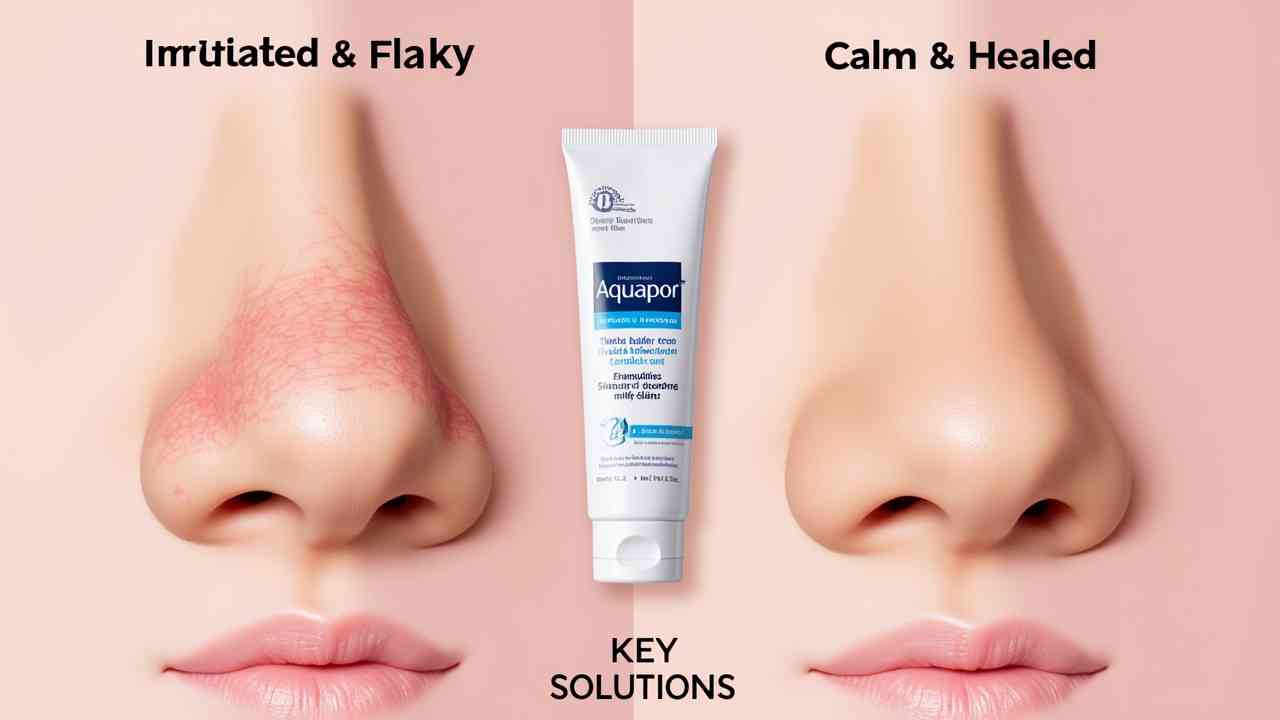
🩹 How to Treat Dry Skin Around Your Nose (A Dermatologist's Guide)
🩹 A Dermatologist's Guide on How to Treat Dry Skin Around Your Nose 🩹
Dry, red, and flaky skin around the nostrils is an incredibly common and annoying problem. It can feel sore, look unsightly, and make makeup application impossible. This issue is especially prevalent as we head into the cooler, drier months of autumn and the start of cold and flu season.
So, how do you treat dry skin around your nose? The great news is that healing this sensitive area is usually a quick and simple process. The secret is to stop all irritation and to focus on creating a gentle, protective, and healing environment for your skin. This guide will show you exactly how. ✅
🤔 First, What Causes Dry Skin Around the Nose?
The skin in the creases of your nose (the nasolabial folds) is delicate and prone to irritation. The dryness and flakiness are usually a sign of a compromised skin barrier. The main culprits are:
- Friction from Tissues: This is the number one cause. Constantly blowing or wiping your nose during a cold or allergy season physically rubs away the top layer of your skin, leading to raw, irritated skin.
- Harsh Skincare Products: Over-exfoliating with strong acids or using drying acne treatments can be too aggressive for this sensitive area.
- Weather Changes: The cold, windy, and dry air of autumn and winter can strip moisture from your skin, making the problem worse.
- Underlying Skin Conditions: Sometimes, this can be a sign of a mild form of seborrheic dermatitis or perioral dermatitis. If the problem persists, you must see a doctor.
- The 4-Step Healing Action Plan
If your nose is already red and sore, your mission is to be as gentle as possible. This is your emergency action plan for healing dry skin around your nose.
Step 1: Stop All "Active" Ingredients.
This is the most critical first step. You must immediately stop applying any strong, active ingredients to the irritated area. This means no retinoids (retinol), no exfoliating acids (like glycolic or salicylic acid), and no Vitamin C serums. These will only cause more stinging and irritation.
Step 2: Cleanse Very Gently.
When you wash your face, be very gentle around your nose. Use only lukewarm water and a mild, creamy, or milky cleanser. Avoid foaming cleansers on the raw area. Pat the skin dry with a soft towel; do not rub.
Step 3: Apply a Thick, Healing Barrier Cream.
This is the most important healing step. You need to apply a simple, bland, and occlusive ointment to the area. This creates a protective seal, like a liquid bandage. It locks in moisture and keeps irritants out, allowing the skin underneath to heal. The best choices are simple ointments with minimal ingredients. Look for products containing:
- Petrolatum
- Lanolin
- Ceramides
Apply a thin layer of this healing balm multiple times a day, and especially as the last step of your skincare routine at night.
Step 4: Protect with a Gentle Sunscreen in the Morning.
Irritated skin is more vulnerable to sun damage. In the morning, make sure to apply a gentle, mineral-based sunscreen over the area to protect it as it heals. ☀️
By following this simple and gentle routine, you can soothe and heal the dry skin around your nose in just a few days. ✨